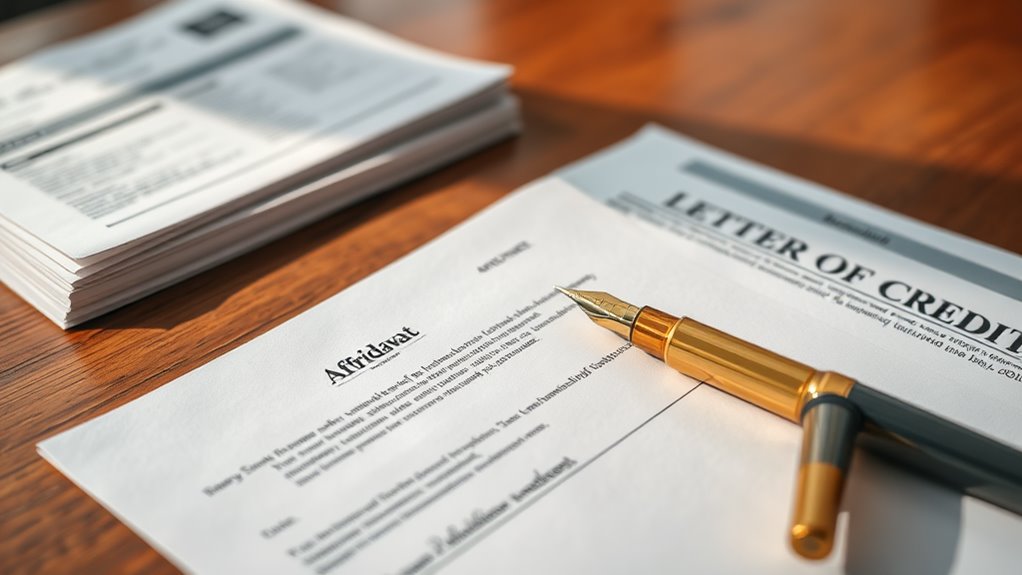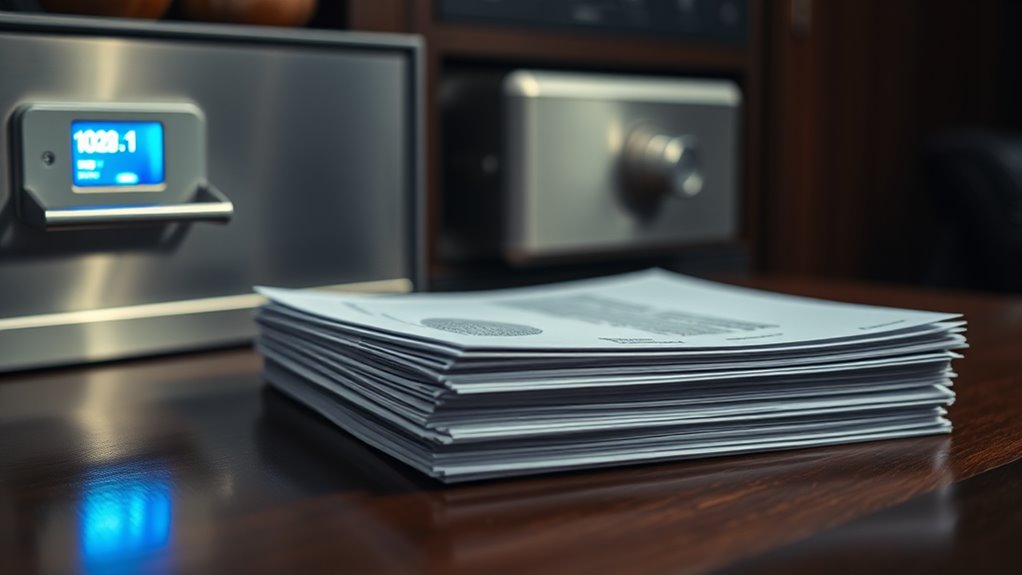Proof of funds confirms your financial readiness for significant transactions, like purchasing property, through bank statements or official letters. You’ll need documents showing your account balance, ownership details, and a recent verification date, typically within the last 90 days. Guarantee the documents are signed by an authorized bank employee and use secure methods to share this sensitive information. Proper handling helps streamline transactions and builds trust. Understanding Proof of Funds requirements guarantees a smoother process ahead.
Key Takeaways
- Proof of Funds documents verify financial ability for significant purchases, such as real estate, with bank statements or official letters.
- Key components include account balance, ownership details, and a recent verification date, typically within the last 90 days.
- Acceptable documents include bank statements, official letters on bank letterhead, or digital versions, all reflecting current financial status.
- Security measures include storing documents in locked or encrypted formats and sharing only with verified, trusted parties.
- Obtain a Proof of Funds letter by contacting your bank, consolidating funds, and confirming specific requirements for the transaction.
Definition and Purpose of Proof of Funds
When you’re making a significant purchase like real estate, you’ll often need to provide proof of funds (POF), which confirms your financial ability to complete the transaction. Proof of Funds serves as essential documentation to verify that you have the funds available to cover costs such as down payments and closing expenses when purchasing a home. These documents typically include bank statements or an official bank letter issued by your financial institution, both of which must accurately reflect your account balance. The purpose of POF is to assure sellers and other involved parties that your liquid funds are legitimate and sufficient to proceed with the transaction. By ensuring transparency and minimizing risks, POF streamlines the buying process and builds trust between all parties. It’s a critical step in demonstrating your financial readiness for large-scale investments.
Key Components of Proof of Funds Documentation
Proof of Funds documentation must clearly demonstrate your financial capacity by including specific, verifiable details. A POF letter should outline the total balance in your bank account, guaranteeing it meets or exceeds the necessary funds required for your transaction. Include an official bank statement that confirms the account number and ownership, as well as the bank’s name and address. Confirm the document is signed by an authorized bank employee to verify its authenticity and includes a recent verification date, typically no older than 90 days. Your name and account number must be prominently displayed to confirm identity. This financial information must accurately reflect the available funds in your checking and savings accounts. Providing these key components guarantees your Proof of Funds is both credible and compliant with standard requirements.
Types of Acceptable Proof of Funds Documents

You’ll typically use bank statements or letters from financial institutions as acceptable proof of funds. These documents must clearly show your name, account details, and the available balance. Verify they’re recent, often within the last 90 days, and properly authenticated to meet requirements.
Bank Statements
Several types of bank statements can serve as acceptable proof of funds, provided they meet specific criteria. Official bank statements must clearly display the account holder’s name, account number, and total balance to verify liquid assets. Confirm these documents are dated within the last 90 days for up-to-date accuracy. Financial institutions often provide digital versions, which are acceptable as long as they remain clear and legible. Non-liquid assets, such as mutual funds, don’t qualify as proof of funds; only readily accessible liquid assets are valid. Always double-check that the bank statement includes all necessary details to avoid delays in processing. By providing accurate and complete bank statements, you effectively demonstrate your financial readiness for transactions or regulatory requirements.
Financial Institution Letters
Financial institution letters are essential documents that can validate your available funds. A proof of funds letter from your bank is a widely accepted document that demonstrates your financial readiness. This letter must be on official letterhead, include the account holder’s name, and specify the total available balance of your liquid assets. Verify it’s signed by an authorized representative to confirm its authenticity. Financial institution letters provide clarity on the funds available for immediate use, distinguishing them from non-liquid assets like stocks or bonds. The document must reflect recent information, typically no older than 90 days, to meet most requirements. Always verify that the letter accurately represents your financial position, as it serves as critical evidence of your ability to fulfill monetary obligations.
Timeliness and Validity of Proof of Funds Records
When submitting proof of funds, it’s essential that the documents reflect your current financial status, as most transactions require records to be no older than 90 days—sometimes even 30 days. Fresh documentation guarantees your proof of funds is valid and minimizes the risk of transaction delays. Lenders often request bank statements or other financial records from the recent month to confirm your available balance and account ownership. Here are key considerations to maintain timeliness and validity:
- Use Recent Statements: Provide bank statements or financial documentation dated within the last 30 to 90 days to guarantee accuracy.
- Highlight Available Balance: Guarantee the proof of funds clearly shows the liquid funds you can access immediately.
- Verify Account Ownership: Include details that confirm your name or entity owns the account to avoid processing issues.
- Check Specific Requirements: Confirm the acceptable timeframe for documentation with the requesting party to meet their criteria.
Security Measures for Handling Proof of Funds Information

You must store proof of funds documents securely to prevent unauthorized access or data breaches. Share this information only with verified and trusted parties to minimize the risk of fraud or identity theft. Implement strategies like redacting sensitive details to balance verification needs with security concerns.
Secure Document Storage
Because proof of funds documents contain sensitive financial details, it is vital to store them securely to prevent unauthorized access. Proper secure document storage guarantees your sensitive financial information remains protected.
- Use password-protected folders: Store digital proof of funds documents in password-protected folders or encrypted files.
- Leverage encryption software: Apply encryption software to digital copies for an added layer of security against cyber threats.
- Opt for two-factor authentication: Enable two-factor authentication on accounts where proof of funds information is stored to prevent unauthorized access.
- Limit access to trusted individuals: Share proof of funds details only with verified, trusted individuals or entities to minimize risks.
Regularly update and back up your documents to guarantee they remain accessible while safeguarding them from potential breaches.
Controlled Information Sharing
Sharing proof of funds requires careful handling to safeguard sensitive financial details. Always verify identity before disclosing documentation to guarantee the requestor is legitimate. Use controlled information sharing practices by limiting access to trusted parties, such as financial institutions or verified entities. Maintain secure storage for digital and physical copies to prevent unauthorized access—keep digital files encrypted and physical records in locked files. Before sharing, consult a financial advisor to confirm compliance with privacy regulations and security protocols. Ascertain digital copies are clear and legible to maintain the integrity of the information. By adhering to these measures, you protect sensitive financial information while meeting Proof of Funds requirements effectively and securely.
Fraud Prevention Strategies
To effectively prevent fraud when handling proof of funds information, it is essential to adopt robust security measures. Proof of Funds documents contain sensitive financial information, making them a target for fraudulent activities. Implement these fraud prevention strategies to safeguard your assets and maintain trust in financial transactions:
- Verify Identity: Always confirm the legitimacy of the requesting party before sharing proof of funds. Check their credentials and verify they are authorized to request such information.
- Use Secure Channels: Transmit sensitive financial details only through encrypted communication platforms or secure file-sharing tools to prevent interception.
- Monitor Accounts: Regularly review bank statements to detect unauthorized transactions or suspicious activity promptly.
- Store Securely: Keep proof of funds documentation in locked physical spaces or encrypted digital formats to prevent unauthorized access or exposure.
Additionally, be cautious of unsolicited requests, as legitimate parties rarely ask for sensitive information without prior engagement.
Distinction Between Proof of Funds and Proof of Deposit
When steering financial transactions, it is crucial to recognize that Proof of Funds (POF) and Proof of Deposit serve distinct purposes. Proof of Funds verifies that you have available funds to complete a transaction, demonstrating your financial capability. It is often required for activities like real estate purchases or mortgage applications. Financial institutions use POF documentation to confirm your liquid assets are accessible. On the other hand, Proof of Deposit shows that specific funds have been deposited into a bank account, guaranteeing transparency about the origin of the deposited funds. While both are critical in financial transactions, POF focuses on financial readiness, whereas Proof of Deposit validates the legitimacy of the source of those funds. Understanding this distinction helps you meet lender requirements effectively, facilitating a smoother process for mortgage applications or other significant financial commitments. Always make sure your documentation aligns with the specific purpose.
Process for Obtaining a Proof of Funds Letter

Understanding the distinction between Proof of Funds and Proof of Deposit helps you navigate financial requirements, but obtaining a Proof of Funds letter requires specific steps. To guarantee a smooth process, consolidate your funds into a single account, such as checking and savings, before requesting one from your bank. This provides proof of your total funds in one place and simplifies verification. Here’s how to proceed:
- Contact Your Bank: Reach out to your bank to request a Proof of Funds letter, which typically includes your account details, total balance, and the bank’s name and address.
- Verify Requirements: Confirm the specific types of documents needed, as institution policies may vary.
- Wait for Processing: Most banks generate these letters within one business day.
- Secure the Letter: Only share it with trusted parties to protect sensitive financial information.
It’s important to note that accuracy and clarity in the letter are essential for its acceptance.
Conclusion
When proving funds, guarantee your documents are ironclad, timely, and valid to avoid delays. Highlight key details like account balances and ownership clearly. Distinguish between proof of funds and deposit to meet specific requirements. Handle sensitive information like a vault, prioritizing security. Obtaining a proof of funds letter is straightforward with the right preparation. By dotting the i’s and crossing the t’s, you’ll navigate this process with ease and confidence.




